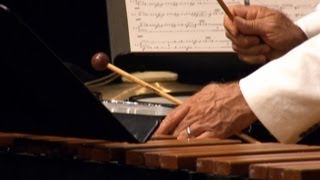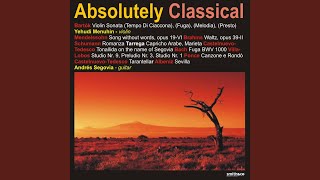Saturday, 27 December, 2025г.
















Где искать: по сайтам Запорожской области, статьи, видео ролики
пример: покупка автомобиля в Запорожье
Béla Bartók - Violin Sonata No. 2 [With score]
-Composer: Béla Viktor János Bartók (25 March 1881 – 26 September 1945)
-Performers: James Ehnes (Violin), Andrew Armstrong (Piano)
Sonata for Violin and Piano No. 2, Sz. 76 (BB. 85) written in 1922
00:00 – I. Molto moderato
08:35 – II. Allegretto
Despite their conventionally accepted numbering, Béla Bartók's First and Second violin sonatas were actually the composer's fourth and fifth works in that genre. Bartók's three earlier sonatas, composed during his student years, are in a Romantic, almost Brahmsian, vein, and show few signs of the bold strides the composer was to make more than two decades later. During the years preceding the First and Second sonatas, Bartók, an accomplished pianist, often performed with violinists. He dedicated these two sonatas to one such musician, Jelly d'Arányi, a Hungarian-born violinist living in London. Performances of these works with d'Arányi and others quickly spread Bartók's reputation throughout Europe and garnered praise from Stravinsky, Ravel, Szymanowski, Poulenc, and Milhaud. In this work, which was composed between July and November 1922, Bartók abandoned the traditional three-movement form of the Sonata No. 1, creating, instead, a more unified, two-movement composition. Nevertheless, the two works share some common features: their assimilation of Schoenberg's extreme chromaticism, and their finales, where the influence of dance music from Eastern European folk traditions comes to the fore. Of course, these movements are not actual folk music, but instead, a highly stylized treatment of folk-like material that prompted Bartók to warn a fellow Hungarian pianist: "We must be careful to avoid any attempt to put on such works as my two Sonatas for violin...in places where the level of music appreciation is as low as it is in Hungarian country towns. Such works would merely rouse antagonism in an audience which has not been trained to listen." The structure of this Sonata, for which the composer himself expressed a preference, can be considered a metaphor for the development of folk song as a natural outgrowth of improvisation. The work opens with a long melody in the style of a hora lunga -- a free improvisation found in Romanian peasant music -- that uses a small group of motivic patterns. This theme returns twice: once in an agitated guise at the end of the first movement, and then once again at the end, the climax of the sonata. In this final appearance, played in the violin's high register, the theme takes on a more stabilized shape in the context of the movement's dance rhythm. Bartók scholar Lászlo Somfai concludes that this plan reveals a hidden program to the sonata: "Bartók recreated the evolution of peasant music...in miniature, from the improvisatory 'ur-form' (using his own themes) to the crystallized stanzaic formation of lyric songs."
[allmusic.com]
Похожие видео
Мой аккаунт


![Béla Bartók - Violin Sonata No. 2 [With score]](https://pic.portall.zp.ua/mq/b/cc/cTI0nTiMemHYy3.jpg) У вашего броузера проблема в совместимости с HTML5
У вашего броузера проблема в совместимости с HTML5![Béla Bartók - Violin Concerto No. 2 [2/3]](/images/mq/7/05/0MX7JFK89ZfzHe.jpg)
![Béla Bartók - Violin Concerto No. 2 [1/3]](/images/mq/e/43/0tU14gy80PCZwf.jpg)

